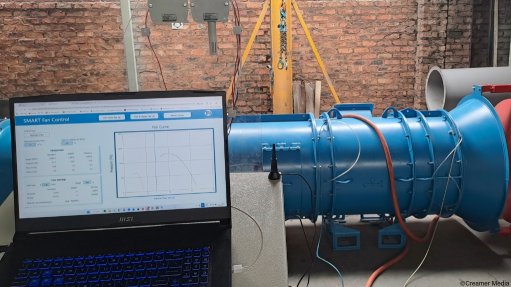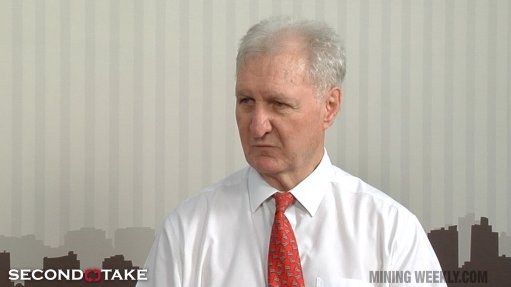Lead production growth expected to slow down in coming months
Lead mine production growth will start to decelerate in the coming quarters as the post-Covid-19 rebound loses steam, market commentary published by market research and consulting firm Fitch Solutions subsidiary BMI, on May 16, shows.
Overall, this slow growth should lift output back to about level with the 2013 peak by 2032.
Overall, BMI says, stronger lead consumption by China's automotive sector will prevent significant further declines in global lead demand and prices this year.
However, in the longer term, environmental restrictions on lead mining and smelting will constrain production growth. Although demand growth will be weak, it will be sufficient to outstrip supply and push prices higher over the coming decade.
Meanwhile, environmental restrictions on lead mining in markets such as the US, Peru and China will prevent more rapid growth in output, BMI says.
The BMI trend analysis shows that strong demand for lead concentrate from global refineries supplying the automotive industry will encourage continued investment in new lead mines throughout the rest of the year.
High global lead prices and continued reduction in Covid-19 disruptions will together drive strong growth in global lead mine production, before growth slows in the longer term.
Lead production declined from a peak of 5.5-million tonnes in 2013 to a cyclical low of 4.4-million tonnes in 2020, before beginning a sustained recovery in 2021. BMI forecasts average yearly growth of 1.5% from 2023 to 2032, which would lift yearly output.
A healthy pipeline of polymetallic mineral projects is expected to boost lead mine production growth as the metal is often produced as a by-product along with other metals such as zinc, silver or copper. Historically, high prices for zinc and copper, in particular, are expected to encourage investment in projects that also produce lead.
Globally, the top four producers – China, Australia, the US and Peru – will account for about two-thirds of global lead mine production this year, BMI says.
Australia, Canada and Peru host the largest pipeline of lead mine projects globally.
In China, BMI forecasts lead production to grow by 1.5% this year, continuing a gradual rebound from the one-third contraction between 2020 and 2023.
“Even with the modest lead mine growth that we forecast in the coming years, China's lead mine output should remain around one-third lower than the 2013 peak of three-million tonnes,” BMI stated.
Meanwhile, government-driven consolidation of lead mines in China, owing to environmental concerns, will constrain lead mine production growth in the next few years. Limited growth in domestic lead refineries in China will be another headwind for mine production, BMI predicts, adding that China's refined lead production growth will be slow in the long term, averaging a yearly growth rate of 1.1% up to 2032.
In the US, BMI expects lead production to rise by 2% this year, with yearly lead production growth expected to be limited until new projects come online after 2025.
The research company forecasts an average yearly output growth of 4.5% from now until 2032 because of a strong domestic project pipeline.
BMI expects the lead mining industry in the US to rise in value from $649.9-million to $695.4-million on the back of elevated prices, which are forecast to rise by about $100/t to $2 250/t. Elevated prices will act as an incentive for miners to bring projects online and to speed up mining exploration.
Overall, the US is expected to remain a top global exporter of lead ore and concentrates. The lead mining industry is heavily dependent on exports owing to the lack of domestic primary lead refineries.
Significant growth in US lead mining production is likely to be dependent on an expansion in Chinese demand, which is the single biggest export market, accounting for 38.6% of exports in 2021.
“We do not anticipate a return to the heights of Chinese exports observed in 2014 to 2016, which will limit growth potential in the long term. Nevertheless, there may be upside from South Korea, which accounted for 19.8% of 2021 exports and is the US' other major lead export market,” BMI says.
However, there is growing potential from smaller export markets such as Italy, Mexico and Australia, all of which have shown a gradual growth in lead ore imports over the last year, albeit from low bases.
Meanwhile, BMI says Australia's lead sector will see modest growth over the coming years, following a steep contraction from 2015 to 2019, as lead prices stabilise and new projects mining lead as a by-product come online. BMI forecasts the country's production to grow from 532 000 t in 2023 to 636 000 t by 2032, averaging 2.1% yearly growth.
The country will benefit from a strong project pipeline on the back of the world's largest lead reserves, at 36-million tonnes as of 2021, equating to about 40% of global reserves. Of all major global lead producers, Australia holds the second most new projects in the pipeline after Canada, according to BMI’s mining projects database, with 30 projects.
In Peru, BMI says that the lead sector will see modest production growth over the coming years, supported by a solid project pipeline across minerals in which lead is often mined as a by-product.
However, BMI expects that ongoing political uncertainty will continue in Peru ahead of new general elections, which are currently scheduled for April next year. This instability is expected to keep uncertainty elevated, particularly regarding the mining sector, which will limit the market’s attractiveness to investors.
Article Enquiry
Email Article
Save Article
Feedback
To advertise email advertising@creamermedia.co.za or click here
Announcements
What's On
Subscribe to improve your user experience...
Option 1 (equivalent of R125 a month):
Receive a weekly copy of Creamer Media's Engineering News & Mining Weekly magazine
(print copy for those in South Africa and e-magazine for those outside of South Africa)
Receive daily email newsletters
Access to full search results
Access archive of magazine back copies
Access to Projects in Progress
Access to ONE Research Report of your choice in PDF format
Option 2 (equivalent of R375 a month):
All benefits from Option 1
PLUS
Access to Creamer Media's Research Channel Africa for ALL Research Reports, in PDF format, on various industrial and mining sectors
including Electricity; Water; Energy Transition; Hydrogen; Roads, Rail and Ports; Coal; Gold; Platinum; Battery Metals; etc.
Already a subscriber?
Forgotten your password?
Receive weekly copy of Creamer Media's Engineering News & Mining Weekly magazine (print copy for those in South Africa and e-magazine for those outside of South Africa)
➕
Recieve daily email newsletters
➕
Access to full search results
➕
Access archive of magazine back copies
➕
Access to Projects in Progress
➕
Access to ONE Research Report of your choice in PDF format
RESEARCH CHANNEL AFRICA
R4500 (equivalent of R375 a month)
SUBSCRIBEAll benefits from Option 1
➕
Access to Creamer Media's Research Channel Africa for ALL Research Reports on various industrial and mining sectors, in PDF format, including on:
Electricity
➕
Water
➕
Energy Transition
➕
Hydrogen
➕
Roads, Rail and Ports
➕
Coal
➕
Gold
➕
Platinum
➕
Battery Metals
➕
etc.
Receive all benefits from Option 1 or Option 2 delivered to numerous people at your company
➕
Multiple User names and Passwords for simultaneous log-ins
➕
Intranet integration access to all in your organisation


















